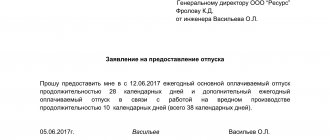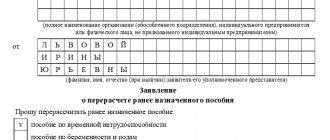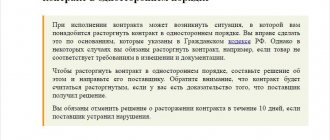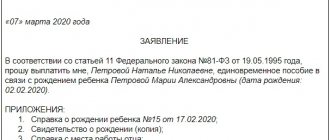Statement on indirect taxes: concept and purpose
An application for the import of goods and payment of indirect taxes (hereinafter referred to as the application) is one of the main documents:
- processed by importers of goods from EAEU countries;
- certifying the fact of import of goods into the Russian Federation from the territory of a member state of the EAEU and payment of indirect taxes;
- provided to tax authorities simultaneously with the declaration of indirect taxes and other related documents;
Find out how many states are currently part of the EAEU from the material.
The main purpose of the application is to confirm the fact of payment of indirect taxes and exchange this information with the tax authorities of the country from which the goods were imported.
We tell you which budget indirect taxes are included in here.
Indirect taxes when importing from the EAEU
First of all, the organization importing goods fills out and submits an application to the tax service of the country into which the goods will be imported. If this statement is drawn up correctly, the exporter will be able to apply VAT at a rate of 0%, and it also affects the amount of tax that will need to be paid. Thus, the essence of the application comes down to the calculation and deduction of VAT on imports and recording the fact of export of goods.
In order to correctly draw up a document, you can use the corresponding function of the 1C: Accounting program. Especially for accounting for VAT accrued when importing goods, starting from version 3.0.35, it is possible to draw up an “Application for the import of goods”. The following is an algorithm for setting up the program and the procedure for filling out the document.
Application structure
The application contains 3 sections and 1 appendix:
- in section 1, information is entered by the buyer or intermediary (if, according to the legislation of the state into whose territory the goods are imported, these persons pay indirect taxes);
- section 2 is intended to mark the registration of the application with the tax authority;
- section 3 is not always filled out and not by everyone - only in certain cases listed in clause 4 of the Rules for filling out an application for indirect taxes (Appendix No. 2 to the Protocol on the exchange of information dated December 11, 2009);
- the application is drawn up if the number of delivery participants is more than three.
Check whether you have filled out the application for indirect taxes correctly using the Ready-made solution from ConsultantPlus. If you do not have access to the K+ system, get a trial online access for free.
Fill out a variety of tax applications using materials from our website:
- “Application for transition to the simplified tax system in 2020-2021 (sample)”;
- “We are preparing an application for personal income tax refund (sample, form)”.
How to enter the “Application for the import of goods” from the receipt document?
To enter an application from receipt documents, in the “Create based on” menu you need to select the appropriate document from the list provided.
This method ensures that the application contains only the data that was in the selected document.
The tax authorities must provide the document in electronic form and four printed copies, which can be obtained by clicking “Print” in the application or through the “Application for Import of Goods” journal.
The application form has three sections. The first contains information about the seller, buyer and product. The second is not filled out - it is reserved for marking the registration of the document with the Federal Tax Service. The third is filled in if the transaction is concluded through an intermediary, the product is not subject to indirect tax in the territory where it will be sold, or if the parties to the agreement are a taxpayer of a country belonging to the EAEU and a taxpayer of another state.
You can check the application and send it without leaving the program, if the 1C-Reporting service is connected, using the “Check” and “Submit” buttons.
Using the “Upload” button, you can save the file to a folder specified by the user.
The file will be saved in XML format.
Documents such as “Confirmation of VAT payment” and “Statistical form for accounting for the movement of goods” can be created on the basis of the “Application for the import of goods” through the application log (the “Create on the basis” menu).
After reviewing the application, the tax officer puts a stamp and signature - marks of acceptance. If errors, inaccuracies and unreliable information are discovered, the application may be refused to be registered with the tax service. If inaccuracies are discovered by the taxpayer, he can withdraw the application to make corrections.
Still have questions? Order a free consultation with our specialists!
Did you like the article?
Want to receive articles like this every Thursday? Keep abreast of changes in legislation? Subscribe to our newsletter
Algorithm for filling out an application
When submitting an application, use the following algorithm:
- Download the application form from our website by clicking on the image below:
- For each supply agreement, fill out a separate application.
- Information about goods of the same type imported under different invoices should be reflected in different rows of the tabular part of Section 1.
- Use the hints when filling out individual columns in section 1:
- Do not fill out Section 2 (this is the responsibility of the tax authorities), but be sure to include it in the document.
- Section 3 is completed only if the goods are sold to the buyer through a commission agent (attorney or agent) or if the sale of goods is not subject to indirect taxes under the legislation of the seller’s country, since the territory of the seller’s country is not recognized as the place of sale of such goods.
The following publications will help you understand line by line filling out tax and other reports:
- “How to correctly fill out section 2 in the 6-NDFL calculation?”;
- “Procedure and sample for filling out Form 85-K (nuances)”;
- “Sample of filling out form 4-FSS”.
Section 3
Section 3 is completed only in the following cases:
1. Operations for the sale of goods are not subject to VAT (excise taxes) in the seller’s state, since the place of sale of such goods is not recognized as the territory of the EAEU member state - the seller;
2. Goods are sold through an intermediary (commission agent, attorney or agent).
3. When importing from the territory of one member state of the EAEU to the territory of another member state of goods purchased by a taxpayer of this other state (buyer) on the basis of an agreement with a taxpayer of a state that is not a member state of the EAEU.
In the first case, in the “Information about the seller” , the taxpayer of the member state of the Eurasian Economic Union from whose territory the goods were exported is indicated, who applied a 0% VAT rate (excise tax exemption) during the sale. In particular, its status, identification number and name are indicated. The “Buyer Information” field is filled in in the same way.
Next, the details of the agreement (contract) are indicated (number and date of the agreement (contract), numbers and dates of specifications) concluded between the seller and the buyer.
In the second case, the data of the principal (principal or principal) is indicated in “Information about the seller” , and the data of the commission agent (attorney or agent) is indicated in the “Information about the buyer” . Then the details of the commission agreement (contract), instructions or agency agreement (contract) concluded between the parties to the transaction are reflected: number and date of the agreement (contract), numbers and dates of specifications.
In the third case, in the fields “Information about the seller” and “Information about the buyer” , the buyer into whose territory the goods were imported indicates the taxpayer of the EAEU member state from whose territory the goods were exported, who applied a VAT rate of 0% when selling these goods (excise tax exemption), and a taxpayer of a state that is not a member state of the Eurasian Economic Union. The details of the agreement between these persons are also indicated.
In this case, the detail “Taxpayer Identification Code (Number)” in the “Buyer Information” is optional.
How to avoid mistakes when completing and submitting an application?
To avoid errors associated with the preparation and submission of an application:
- before sending it to the controllers, check that there are no discrepancies in the information specified in the application and the indirect tax return (including the amount of VAT payable);
- check the data on the paper version of the application and its electronic form - they must be completely identical;
- pay the VAT amount in full and on time, otherwise the fact of payment will not be confirmed by the tax authorities;
- check the correctness of the calculation of the tax base used to calculate indirect taxes in order to avoid underpayment.
Errors in the application may result in the refusal of the controllers to register the application and, as a result, negative tax consequences for the seller and the buyer (impossibility of deducting import VAT and confirming the zero tax rate).
On our website you will find useful information about types of errors and methods for correcting them:
- “How and what errors can be corrected in the SZV-M report?”;
- “Client-bank system - synchronization error”.
How are copies of the application distributed?
The importer will be required (clause 1 of the Rules for filling out the application - Appendix No. 2 to the Protocol on the exchange of information between the tax authorities of the EAEU member countries dated December 11, 2009):
- 4 paper copies of the application + application in electronic form; or
- electronic application signed with digital signature.
For what purpose the digital signature obtained from the Federal Treasury is used, find out from the publication.
Distribution of paper versions of the application:
- 1 - tax authorities take it;
- 1 - the importer keeps it;
- 2 - the importer sends it to his counterparty (to confirm the validity of applying the zero VAT rate).
Learn about ways to submit various reports to controllers from the following materials:
- “How do you submit SZV-M reports on paper?”;
- “Electronic reporting via the Internet - which is better?”.
Results
If you imported goods from Belarus, Kazakhstan, Kyrgyzstan or Armenia, fill out an application for indirect taxes. It certifies the fact of import of goods from the EAEU and payment of indirect taxes.
The document has 3 sections and an appendix. Section 2 is intended for marking by the tax authority, and in the rest the importer reflects information about the buyer, supplier, goods, etc.
The application is submitted to the tax authorities along with the declaration and other documents.
You can find more complete information on the topic in ConsultantPlus. Free trial access to the system for 2 days.
Indirect Tax Return 2022
The declaration form was updated in 2022, and there have been no changes since then. Continue to use the form that was approved by the Federal Tax Service by Order dated September 27, 2017 N SA-7-3 / [email protected] The Order provides for sending the declaration electronically and explains the procedure for filling it out.
Filling out an indirect tax return
The declaration combines payments for value added tax and excise taxes. It includes four sheets - a title page and three sections. The title page and the first section are filled out by all taxpayers who have accepted imported goods for registration, and those whose lease payment due under the contract has come due. The second and third are only those tax payers who import excisable goods and have the corresponding indicators. The third section is needed to calculate excise tax amounts on goods containing ethyl alcohol.
Title page
- Indicate the TIN and KPP of the organization. Individual entrepreneurs indicate only the TIN, and in the “Checkpoint” there is a dash;
- if you are submitting an initial declaration, enter the adjustment number - 0, for an updated declaration - 1, 2 and so on;
- the tax period is a month, so in the appropriate field indicate the month number “01” for January, “02” for February, etc.;
- fill in the “provided to the tax authority” field with the appropriate code, and if you submit a declaration at the place of registration, fill out the “at location” field, indicating code 400.
- In the “reporting year” indicator, indicate the year of the tax period. For example, in the declaration for February 2022 - “2021”.
- In the “taxpayer” field, provide the full name of the organization in accordance with the documents or the full name of the entrepreneur.
First section
At the top, indicate the TIN, KPP and page number. Next, in the appropriate lines, indicate the code OKTMO and KBK of the payment, and in line 030 enter the amount of VAT payable. It is calculated by adding lines 031–035 of the first section, each of which is allocated for its own purposes. For example, 035 for lease payments, and 033 for goods resulting from work.
Example. Paris LLC purchased equipment worth 45,000 rubles and goods for processing worth 4,000 rubles in Kazakhstan.
- Line 032: 4,000 × 20% = 800 rubles
- Line 031: 45,000 × 20% = 9,000 rubles
- Line 030: 9,000 + 800 = 9,800 rubles.
Accordingly, if you paid for goods that were the results of work, paid trade loans or lease payments, take these expenses into account when calculating the total tax amount on line 030. The cost of goods exempt from VAT under Chapter. 21 of the Tax Code of the Russian Federation and imported from the EAEU countries is reflected in line 040.
Second section
In the second section, filling out lines 010, 020 is similar to the first - we indicate OKTMO, KBK. Line 030 reflects the total amount of excise tax payable, calculated as the sum of lines 050 of the second section for the corresponding BCC. In line 040, indicate the country code, it can be found in OKSM: code for Armenia - 051, Kazakhstan - 398, Belarus - 112, Kyrgyzstan - 417.
When calculating the amount of excise duty for each product, indicate:
- code of the type of excisable goods from Appendix No. 5 to the Order and code of the unit of measurement, according to OKEI;
- if you purchased a motorcycle or car, indicate in the column the engine power in horsepower (kW/0.75), and for products with ethyl alcohol - its percentage;
- volume/quantity of goods - only for goods containing ethyl alcohol, or cars, motorcycles. In other cases, put a dash.
- tax base;
- in line 050 - the amount of excise tax on this product.
The declaration may have several sections two if the standard number of lines is not enough to reflect all the indicators.
Third section
The third section must be filled out in case of importing ethyl alcohol from all types of raw materials: denatured ethyl alcohol, raw alcohol, distillates of wine, grape, fruit, cognac, Calvados, whiskey.
Fill out lines 010-040 similarly to the second section. Next, specify:
- The code for the type of alcohol can be found in Appendix No. 5 to the procedure for filling out the declaration established by Order of the Federal Tax Service No. SA-7-3 / [email protected]
- code of the type of excisable product for the production of which the imported ethyl alcohol will be used. If the products manufactured are not excisable goods, put a dash in the column.
- the code indicating the application of the excise tax rate on alcohol is indicated in Appendix No. 6 to the procedure for filling out the declaration established by Order of the Federal Tax Service No. SA-7-3 / [email protected]
- tax base in liters.
In line 050, enter the amount of excise tax payable to the budget in rubles, and in line 060 indicate the number of the notice of payment of the advance payment or exemption from it, if any.







